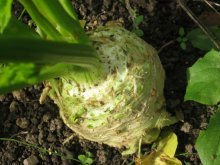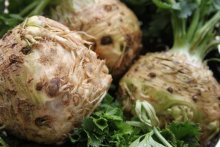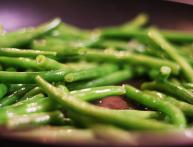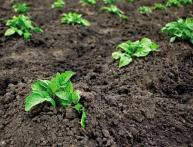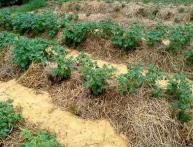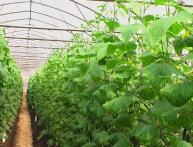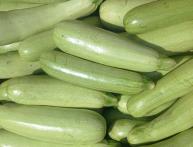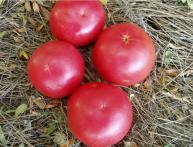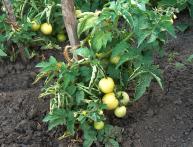Growing root celery in a summer cottage on your own
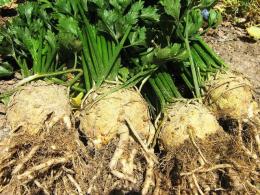
Celery, aromatic or cultivated, belongs to the same family as the familiar carrot. It can be grown as an annual plant for greens and root vegetables. To obtain seeds for subsequent plantings of celery grow in a two-year cycle.
After harvesting the root crops in the fall of the first year, they are planted in the ground again the following spring. After which flowers and seeds form on the celery. Let’s try to figure out how difficult it is to grow root celery on your own.
Content:
Celery seeds
If you managed to harvest a good harvest of celery root crops in the fall, then it makes sense to get the seeds yourself. To do this, you need to put aside healthy root vegetables for storage. It is advisable to choose them so that the average weight of the root crop is about 200 -300 g. The skin should be intact and have no signs of damage or rot. Cut the leaf petioles so that the part remaining on the root crop is 5-6 cm long.
Pour sand into a wooden or plywood box and dig in the selected root crops so that the top part and petioles are not covered with sand. Place underground and store until spring. The temperature in the storage should be at + 1 + 2.
In the spring, all that remains is to plant it all in the garden, wait for the flower stalks to appear, and after ripeness, collect the seeds for the next planting.If the harvest of root celery does not live up to expectations, then you can choose seeds in a special store.
The most popular are varieties celery root:
- Egor, root crop weight is about 0.5 kg, ripens on day 170
- Zvindra, root crop weight is about 0.4 kg, ripens in 170 days
- Root Gribovsky, weight of root crops 0.2 kg, ripens on 185 - 190 days
- Maxim, root vegetables weighing about 0.4 kg, ripening at 200 days
- Apple, fruits weighing about 140 g, ripening in 90 - 100 days
Important! When choosing root celery seeds in the store, you need to remember that it remains viable for no longer than two years from the date of collection. It is advisable that the bag indicates both the sell-by date and the date of seed procurement. Having received the seeds, you can plan to independently grow celery root crops in your summer cottage.
How to sow celery
The climatic conditions of most regions are such that to obtain root crops, celery is grown mainly through sowing seedlings. In addition, when choosing varieties, you still need to give preference to those that will produce a harvest within 150 days.
The timing of sowing seedlings for celery is determined depending on the climate and weather. It is optimal to start sowing in mid-February and continue until the end of the first ten days of March. For getting seedlings you need to prepare a fairly light soil mixture. To do this, you can take in equal parts:
- sand
- humus
- sod land
Steam or fry the mixture to disinfect. Fill seating boxes 10 - 12 cm high with the prepared mixture. Lightly compact it and moisten it. Before planting, rinse the seeds in hot water, then soak them for 48 hours, and dry them on a piece of paper before planting.
Make grooves.The distance between them should be three cm. The depth of the grooves is 0.3 - 0.5 mm. Spread the seeds and press them lightly into the ground. The seeds are not covered with soil.
To maintain soil moisture, cover the boxes with film and place them in a room where the temperature can be maintained at + 22 + 24 degrees. Important! Celery germinates faster if the humidity is maintained. Simple watering for seeds is not suitable. It is best to spray the soil.
When seedlings emerge, the boxes should be kept at a lower temperature. When a couple or three true leaves appear on the celery, they can be planted in individual containers of 2-3 plants. In open ground seedlings transplanted in mid-May.
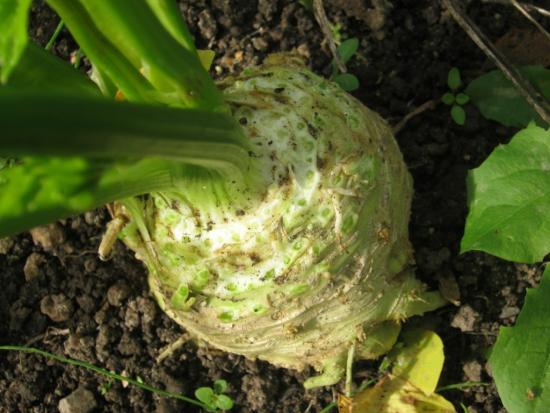
To get a harvest of root crops without growing seedlings, you need to sow the seeds in the ground quite early. The best time for this is the last ten days of April. It is better to prepare the bed for this in the fall by digging it up and adding well-rotted humus in an amount of three to five kg per square meter. m.
The seeds are placed in shallow grooves and lightly sprinkled with sand. Shoots appear in about three to four weeks. Root crops sown directly into the ground take a very long time to reach maturity; it is advisable to choose early varieties of this crop for seedless cultivation.
How to care for root celery
Before planting seedlings, the soil is loosened, holes are made 15 cm deep at a distance of 20 cm. A gap of about 40 cm should be left between the rows. The bushes are rolled into the holes and covered with soil. Then water well. If the soil is dry, then you can water the hole, transfer the seedling into it, cover the hole with soil and water again.
Further care of root celery should be aimed at growing a large and healthy tuber. Its formation begins only at the end of August, beginning of September. Until this point, all care comes down to timely watering. Celery loves moisture, so it needs to be provided with it in the absence of precipitation.

After each watering, the soil must be loosened so that it does not form a crust. In addition, the bed needs to be weeded. This will help the celery get stronger; after weeding, you can cover the soil with mulch. When the plant begins to actively grow, the weeds will no longer be able to harm it, since they do not really like the proximity to celery. In August, the outer leaves need to be removed.
They are not eaten. If you need a small amount of greenery, it is better to take the leaves from the middle. The growth of celery is negatively affected by the lack of a mineral such as boron. Not only does the growing point begin to rot, but the root also begins to crack, and various pathogenic organisms settle in the cracks.
Plants that grow on very light sandy soils with a significant lack of moisture are most susceptible to mineral starvation. It is not difficult to correct the situation. It is enough to spray several times celery borax solution. Compliance with the simplest agricultural techniques will allow you to get a good harvest of aromatic and very healthy root crops.
Video about growing celery root:

